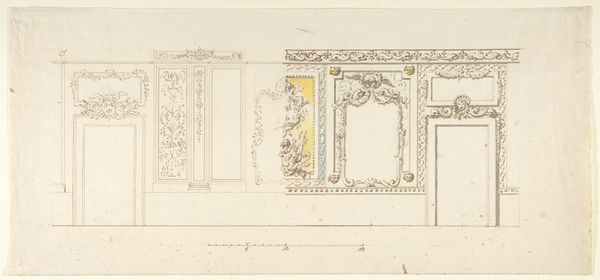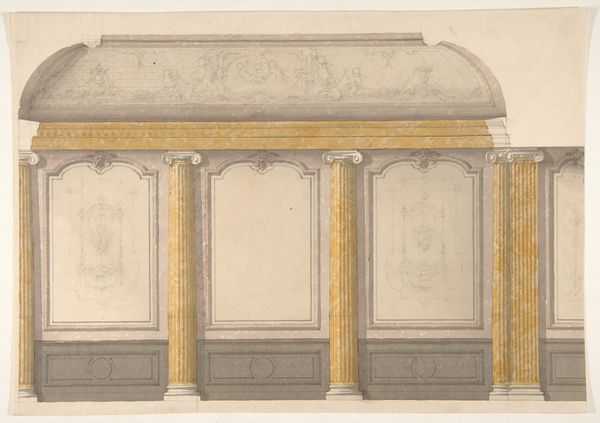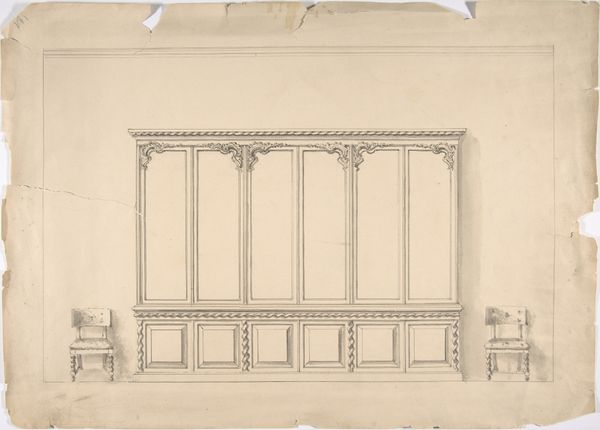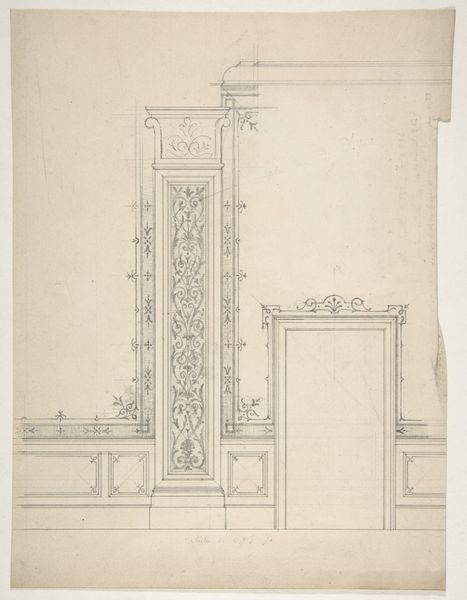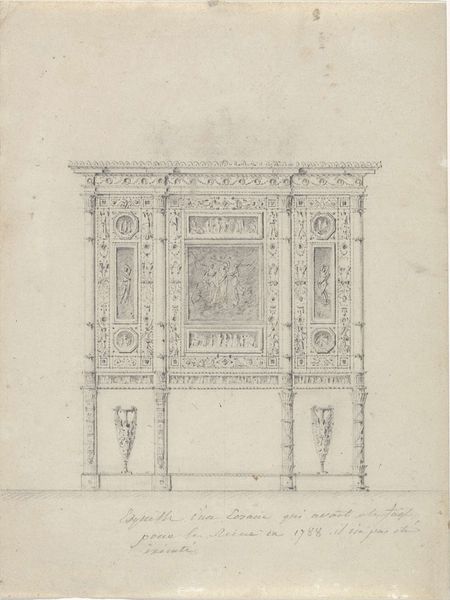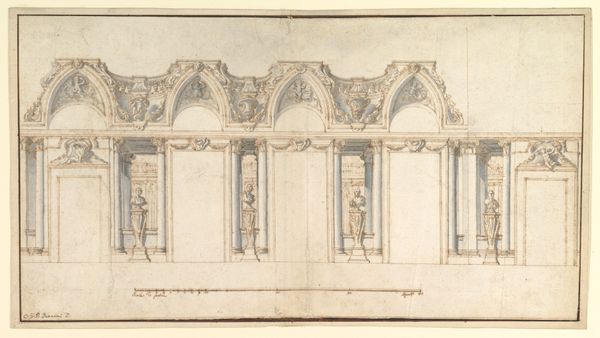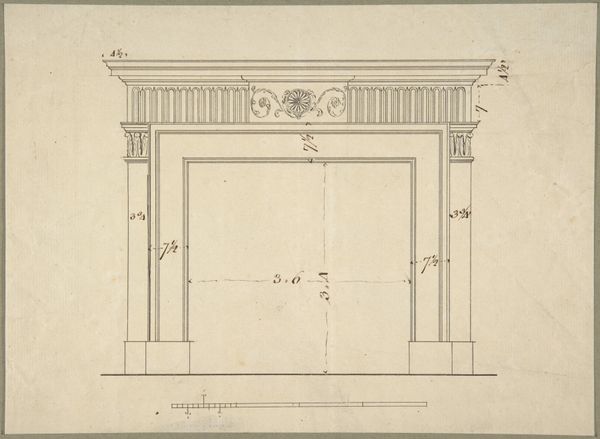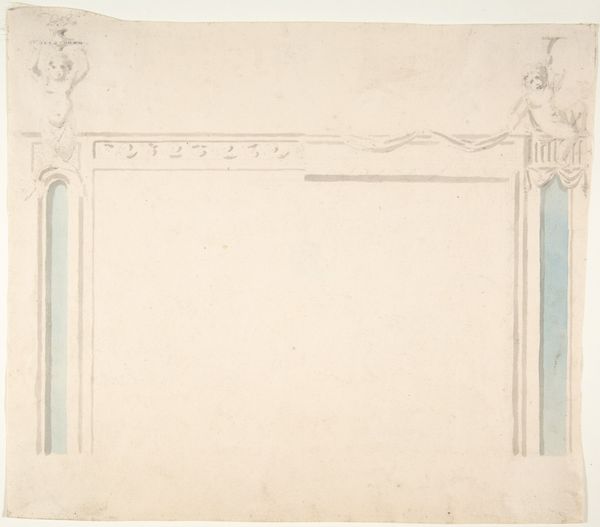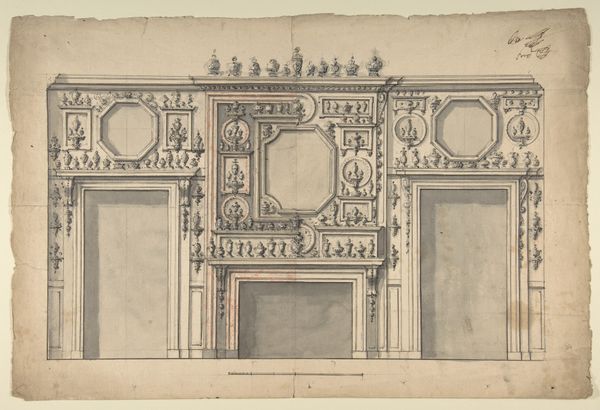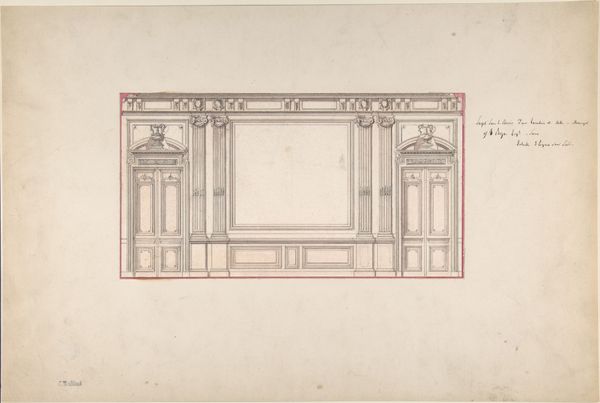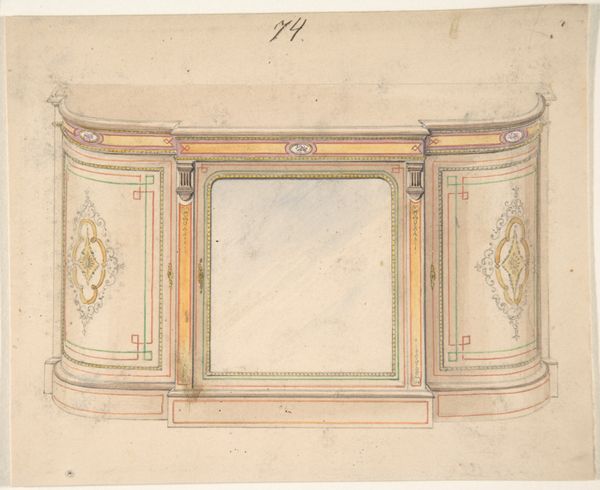
Ontwerp voor een bureau, met een variant in de decoratie van de deuren c. 1800 - 1810
0:00
0:00
charlespercier
Rijksmuseum
drawing, watercolor, architecture
#
drawing
#
historical design
#
neoclacissism
#
classical-realism
#
watercolor
#
geometric
#
watercolour illustration
#
decorative-art
#
watercolor
#
architecture
Dimensions: height 297 mm, width 433 mm
Copyright: Rijks Museum: Open Domain
Curator: This is a design for a bureau, attributed to Charles Percier, dating from around 1800 to 1810. It's a watercolor drawing. Editor: It feels strangely…austere for such a decorative object. All those sharp angles and right lines—imposing. But also, restrained in its palette, almost cool. Curator: Neoclassicism prized that kind of calculated elegance. Think of the political climate then – the rise and fall of Napoleon. Percier was designing for a world hungry for order and refined power, which heavily shaped his approach. It became the Empire style later on. Editor: But who would be producing this bureau? The drawing seems so precise. Did Percier himself have a hand in building such pieces? Or was he setting the standard for craftspeople under his influence, establishing means for furniture construction in a changing manufacturing world? Curator: Percier was an architect and designer, envisioning total environments. Furniture like this bureau was intended to harmonize within specific architectural contexts. He wasn't laboring with his own hands so much as setting aesthetic and ideological frameworks that trickled down to other artisans. Editor: Still, the success relies on the unacknowledged labor – the execution of the intricate detailing, the selection of materials... all that craftwork disappears in the grandeur of the design itself, in a consumerist cycle of creation and reception. The value placed on his ‘ideas’ feels distinctly political, almost imperial itself. Curator: Precisely, and design became central in creating Napoleon's image and spreading it throughout Europe. That visual and material culture worked hand-in-hand. These aren't simply designs for desks, but blueprints for shaping political sensibilities and displaying power. Editor: Seeing it this way, what felt restrained initially is revealed as a carefully calculated control of materials and craftsmanship. It all seems rather...brittle now, I suppose. Curator: Indeed. This bureau represents a fascinating nexus of political ambition, design theory, and the often invisible labor that brought such visions to life.
Comments
No comments
Be the first to comment and join the conversation on the ultimate creative platform.

